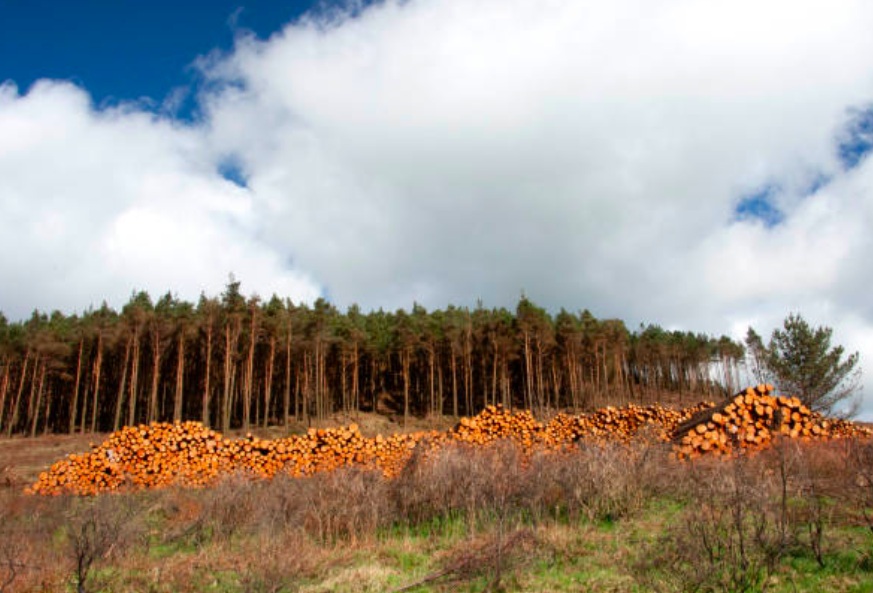Policy Reform in Canada for Increasing Salvaging Logs from Arboricultural Tree Removals: A Focus on Zero Waste Principles and Sustainable Urban Forest Management
Salvaging logs from urban tree removals promotes sustainability by reducing waste, supporting local economies, and preserving carbon storage. Benjamin Patton, CEO and Founder at TreeCycle Environmental Inc., explains how policy reforms, financial incentives, and public education can help integrate zero waste principles into urban forest management across Canadian cities.
Urban forests are essential for the health and well-being of cities across Canada. They provide ecological, economic, and social benefits, including improved air quality, stormwater management, and aesthetic value. However, urban forests face various challenges, including rapid urbanization, the effects of climate change, and invasive pests, all of which can lead to the removal of trees. A significant concern with tree removals is the waste of valuable tree materials, especially logs. In response to this issue, policy reform aimed at salvaging logs from arboricultural tree removals can play a critical role in promoting zero waste principles and ensuring the sustainability of urban forest management.
Importance of Salvaging Logs
Salvaging logs from urban tree removals is an important practice for several reasons. First, it reduces waste. Urban tree removals often result in large amounts of wood and biomass being sent to landfills or chipped for mulch, when these materials could be put to better use. Logs from trees can be repurposed for a variety of uses, including lumber for construction, furniture, and artistic projects. By salvaging logs, municipalities and communities can significantly reduce the volume of waste going to landfills or waste centers as a cost effective alternative, contributing to a more sustainable urban ecosystem.
Second, wood is a valuable resource, and by salvaging and repurposing urban logs at end-of-life, cities can generate local economic value. Local sawmills, woodworkers, and artisans can use the logs for various products, creating opportunities for small businesses and contributing to the local economy.
Finally, salvaging logs plays a crucial role in urban carbon sequestration. When trees are removed and their logs are wasted, the carbon stored in the wood is not captured. However, when logs are repurposed and used for long-term products like furniture or construction materials, the carbon remains sequestered for a longer period; contributing to a more sustainable and circular economy.
“Urban tree removals often result in large amounts of wood and biomass being sent to landfills or chipped for mulch, when these materials could be put to better use.”
– Benjamin Patton
Zero Waste Principles in Urban Forest Management
Zero waste principles aim to minimize waste, promote recycling and reuse, and conserve resources. Within urban forest management, this can be achieved by prioritizing the salvaging of logs and other materials that are still valuable. For example, instead of chipping all removed trees, cities can assess which trees have logs that are of sufficient size and quality for repurposing. In addition to logs, other materials, such as branches and leaves, can be composted or turned into mulch, further contributing to zero waste goals.

Another important aspect of circular economy is encouraging the reuse, recycling, and upcycling of materials, creating a closed-loop system where resources are continuously cycled back into the economy. Salvaged logs can be used for a variety of products, such as furniture, flooring, building produces, and decorative items, which reduces the need for new raw materials and the environmental impact of production processes.
Incorporating zero waste principles into urban forest management requires a shift in mindset from seeing tree removals as a wasteful process to viewing them as an opportunity to extract value from the materials. This shift can be supported through policy reforms that encourage the salvage and reuse of logs, making it easier for municipalities and businesses to engage in sustainable practices.
Policy Solutions to Encourage Urban Forest Log Salvaging
To increase the salvaging of logs from arboricultural tree removals, Canada must implement policy reforms that support sustainable urban forest management and zero waste principles. Several key reforms could be introduced at the municipal, provincial, and federal levels to achieve these goals.
1. Incentivizing Log Salvaging Through Financial Support
One of the barriers to salvaging logs from tree removals is the financial cost of processing and repurposing the logs. Tree removal often requires specialized equipment, and transporting large logs can be expensive. To address this, municipalities could provide financial incentives like grants or tax credits for landowners, businesses, and organizations that salvage and repurpose logs from tree removals. This would help make it more economically viable for tree owners and businesses to participate in the process.
2. Implementing Tree Assessment Guidelines and Bylaws
A key challenge in salvaging logs is identifying which trees are suitable for repurposing. Not all trees removed from urban environments are of sufficient quality for salvage, and some may be diseased or structurally compromised. To address this, municipalities could implement tree salvage bylaws and assessment guidelines that evaluate the quality of trees before they are removed. This can be done through the permitting stage where a salvage assessment is required to accompany any required permit. These guidelines could help determine which trees have logs that are suitable for salvage and which should be disposed of or chipped. Tree salvage bylaws and assessment guidelines could be developed in collaboration with arborists and urban foresters to ensure that only trees with good-quality wood are selected for salvage.
3. Establishing Partnerships Between Municipalities and Local Businesses
Municipalities can play a key role in facilitating the salvaging of logs by establishing partnerships with local sawmills, woodworkers, and artists. These partnerships could be formalized through agreements that ensure logs are efficiently salvaged and put to good use. Municipalities could work with local businesses to create a network of organizations that specialize in repurposing salvaged wood, fostering a sustainable supply chain for urban tree materials. By working together, municipalities and local businesses can create a sustainable, circular economy for urban forest products.

4. Implementing Sustainable Tree Removal Policies
In addition to encouraging log salvaging, municipalities should adopt policies that promote sustainable tree removals in the first place. This includes ensuring that tree removals are conducted for legitimate reasons, such as safety concerns, disease, or invasive pests, rather than due to development pressures. Sustainable tree removal policies should prioritize tree preservation and minimize unnecessary removals. When removals are necessary, these policies should ensure that logs are salvaged whenever possible.
5. Educating the Public and Stakeholders
Finally, public education and stakeholder engagement are crucial for the success of log salvaging initiatives. Municipalities should invest in raising awareness about the importance of salvaging logs and the potential benefits for the environment, economy, and community. Public outreach campaigns can inform residents about how they can participate in log salvaging programs and encourage local businesses to get involved. Additionally, education efforts can highlight the importance of sustainable urban forest management and zero waste principles, fostering a culture of sustainability in urban communities.
“Municipalities should invest in raising awareness about the importance of salvaging logs and the potential benefits for the environment, economy, and community.”
– Benjamin Patton
Conclusion
Salvaging logs from arboricultural tree removals in urban areas is an essential practice for promoting zero waste principles and sustainable urban forest management in Canada. Policy reforms that incentivize log salvaging, implement tree assessment guidelines, establish partnerships with local businesses, and promote sustainable tree removals can play a significant role in advancing these goals. With the right policies in place, Canada can move toward a more sustainable and circular approach to urban forest management, benefiting both urban ecosystems and communities.














